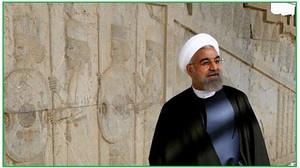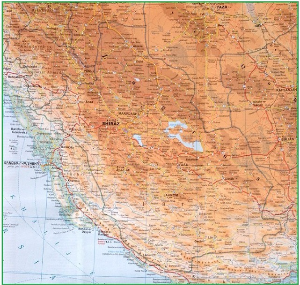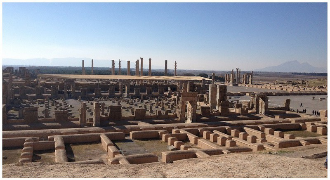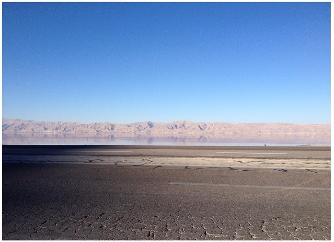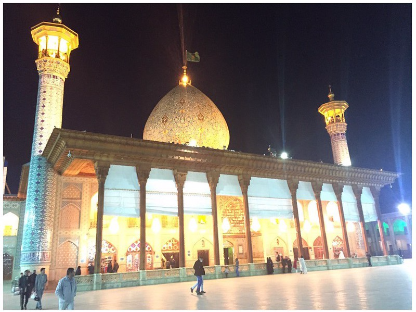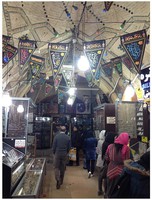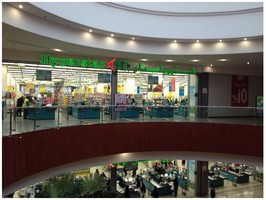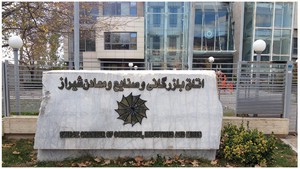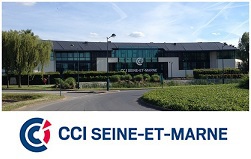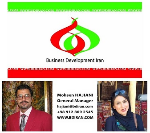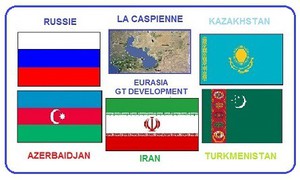
FARS and SHIRAZ GENERAL PERSPECTIVE
FARS PROVINCE INVESTMENT
President ROUHANI
Mr AHMADI, Fars Governor General
Fars province is of importance due its potentials in industry, agriculture, mining, tourism, and etc. So, officials should try to equip the domestic ressources, attract foreign investments, and guide ressources to the way of productive economic activities.
Moreover, resistance economic policies make these activities necessary which can lead to the revolution in the country's economy as well as the province's. Due to the Fars potentials in private sector and good infrastructures for industrial, trade, and tourism developments this region provides considerable grounds for both foreign and domestic investors.
Considering the Investment Promotion and Protection Act and also the officials' efforts to provide the proper ground for investing, we believe in the presence of investors.
Mr TAJGARDOON, Assistant of Planning and Employment
Potentials of Fars create proper conditions for investment; geographical location, climate variability, different types of agricultural activities, industrial products, several industrial zones, mineral resources, tourism attractions, closeness to the Persian Gulf, and etc. all lead Fars toward the economic development. Fars Investment Services Center tries to solve investors' problems by its legitimate power.
We aim to introduce Fars Province Investment opportunities and advise investors pay attention to the guidance of our counselors in order to make the best possible decision.
INTRODUCTION
Fars is one of the thirty-one provinces of Iran located in the south of the country. Fars has three distinct climates including mountainous, mild, and hot. It also covers an area of 122 ,608 km2 which makes it the fourth largest province in the country.
Based on the administrtive divisions in 2014, Fars is divided into 29 cities, 102 towns,, 84 districts, and 205 villages. Persians is the main ethnic group in the province, while Lurs, Qashqai, Laks, and Arab Khamse constitute minorities.
Main economic ressources of Fars are agriculture, stock raising, industrial estates, refineries, petrochemical, and various plants. Moreover, tourism is a large industryand many higher educational institutions alsi exist in the Fars.
HISTORY
Fars is one of the earliest centers of civilization and also the Persia Empire of the Achaemenid and Sassanian.
Archaeological sites obviously reflect Fars historical background. Pars was one of the greatest Aryan tribes that lived in the southern part of Iran. The term was later applied to call the entire country asPars, Persia in English, Persian in French, and also used in other languages with a slightly different.
CLIMATE
Due to topographic features, three climate areas emerged in Fars. North, North-East and West mountainous area which has cold winters and significant vegetation. 400-600 ml annual raifall is reported. Then the central area with a moderate temperature and also rain in winters. Summers are hot and dry 200-400 ml annual rainfall is reported. Shiraz, Fars, Firouz Abad and Kazeroun are located in this area.
Third climat area is south and south-west area which has low height and latitude rainfall in winter, in comparison which spring and automn is low. It has a moderate climate in winters and extremely hot in summers. Lar, Jouyom, Evaz and Khonj are located in this area. The average relative humidity is maximum 84,5% and minimum 12'5% in these areas.
PHYSIOGRAPHY
Fars province is located in the south of Iran between 27° and 31° north lattitude and 50° and 55° east longitude. Farsshares borders with Isfahan to the north, Hormogan to the south west, Kohgiluyeh Va Boyer Ahmad to the north west, Kerman to the east, and Yazd to the north east. It covers approximately 4,7% of the country's total area.
GEOPOLITICS
According to the latest administrative divisions in 2013, Fars province is subdivided into 29 countries, 84 districts, 102 cities and 205 rural districts. Abade, Arsanjan, Eqlid, Bavanat, Pasargad, Jahrom, Kharame, Darab etc... are some counties of this province.
LANGUAGE and RELIGION
Majority of Fars people speak Farsi. However, Shirzi, Larestani, Qashqaye, Sivandi, Davanich and Lori are also common dialects in Fars.
99,3% of Fars people are moslem, who get on well whit religious minorities such as zoroastrians, jews, and christians. Sunni is also common in Larestan, Khonj, Mohr and other parts of the province.
POPULATION
According to the last official census in 2011, Fars with population of 4.596.658 is the fourth populous province in Iran (1,6% of the country total population). The total population composed of 50,4% male and 49,6% female in which 67,6% live in urban areas and 32,1% in villages and also 0,3% are non-resident population.
49,2% of population (2.2 million people) is between 15-40 which it makes Fars a young province. More than 37% of Fars population is living in Shiraz.
Fars Population Pyramid in 2011
|
Female |
Percentage |
Age |
Percentage |
Male |
|
129368 |
5,70% |
Above 65 |
5,70% |
131658 |
|
62123 |
2,70% |
64-60 |
2,40% |
54739 |
|
86391 |
3,80% |
59-55 |
3,60% |
84152 |
|
108076 |
4,70% |
54-50 |
4,80% |
111856 |
|
121424 |
5,30% |
49-45 |
5,30% |
123139 |
|
147062 |
6,40% |
44-40 |
6,50% |
149606 |
|
163716 |
7,20% |
39-35 |
7,20% |
166763 |
|
215342 |
9,40% |
34-30 |
9,20% |
213878 |
|
278799 |
12,20% |
29-25 |
12,20% |
281700 |
|
271501 |
11,90% |
24-20 |
11,70% |
271251 |
|
197171 |
8,60% |
19-15 |
8,80% |
203870 |
|
162833 |
7,10% |
14-10 |
7,30% |
168476 |
|
159282 |
7,00% |
9-5 |
7,30% |
168541 |
|
177656 |
7,80% |
4-0 |
8,00% |
186285 |
EMPLOYMENT
The participation rate of employment in different economic sectors is as follow :
|
2009 |
2010 |
2011 |
2012 |
2013 |
||
|
Agriculture |
27,8 % |
23,0 % |
24,2 % |
24,2 % |
19,7 % |
|
|
Fars |
Industry |
23,2 % |
28,0% |
31,0 % |
30,5 % |
32,1 % |
|
Services |
49,0 % |
48,9 % |
44,8 % |
45,3 % |
48,2 % |
|
|
Agriculture |
20,9 % |
19,2 % |
18,6 % |
18,9 % |
18,3 % |
|
|
Iran |
Industry |
31,8 % |
32,2 % |
33,4 % |
33,6 % |
34,3 % |
|
Services |
47,3 % |
48,6 % |
48,0 % |
47,5 % |
47,4 % |
